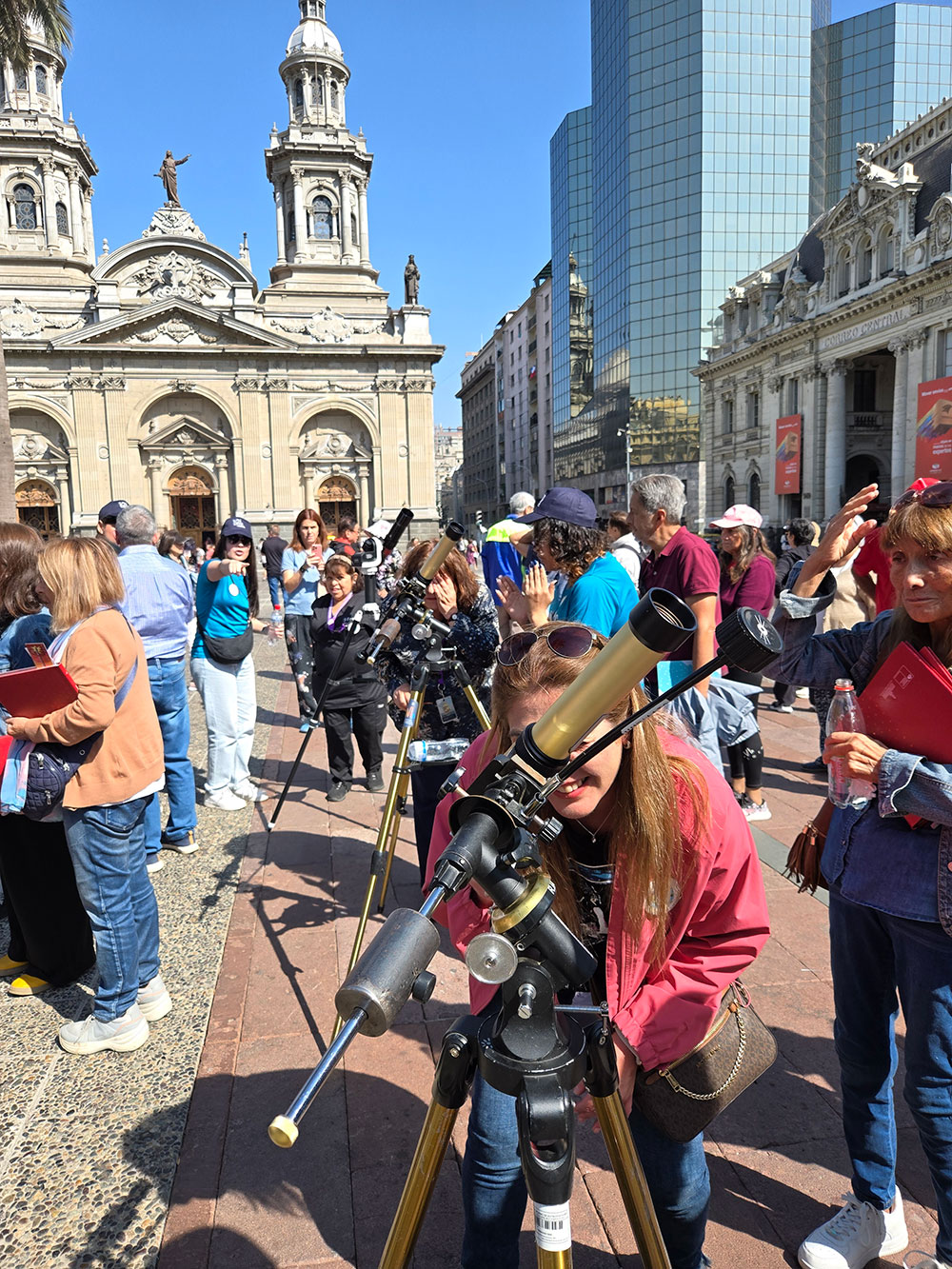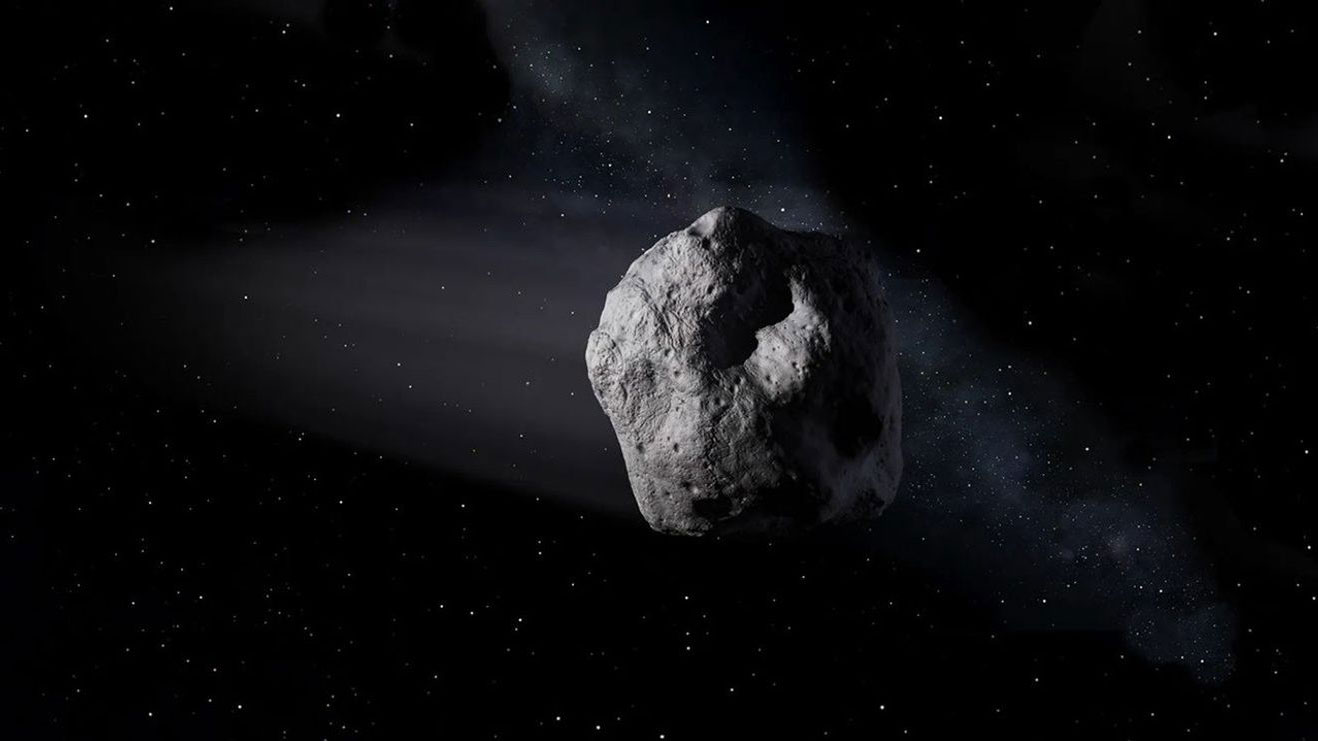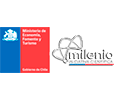
The group - made up of astronomers, geologists and artists - swept the potential fall zone in the Coquimbo region in search of the rocks, the first detected by the network of falling cameras in a place where recovery might be possible.
The expedition took place between December 2 and 5 in the commune of La Higuera.located some 45 km north of La Serena, and although no meteorite has been recovered as of the date of this publication, this search sets a precedent for the work carried out by the camera network. Fripon Andino. This network, which already suma 9 cámaras all-sky from Calama to Puerto Williams in Chile and 2 cameras in Mendoza and the OAFA-Cesco Observatory in Argentina.detects fireballs entering our atmosphere, tracing their trajectory for a possible recovery of their remains.
In particular, this is the first detection of a bolide by the network associated with the fall of one (or more) potential meteorites in an area where their recovery is feasible.For this reason, a search team made up of representatives from different institutions was activated. "An important objective, but difficult to achieve, is the effective recovery of meteorites, after estimating their impact points. However, this particular fall has allowed us to verify that the network is working well and that a search team can be assembled in a reasonable time at the date of the fall," he says. Millarca Valenzuela, meteorite geologist and researcher at the Millennium Institute of Astrophysics and the Universidad Católica del Norte.


The expedition
The expedition included an interdisciplinary and inter-institutional group of experts: Alexandre Corgne, Katalina Vidal, Simón Pérez (UACH), Sebastien Bouquillon (Laboratorio Franco-Chileno de Astronomía, Observatoire de Paris), Vicente Maldonado (UCHILE), Millarca Valenzuela (UCN, MAS), Eduardo Arancibia (UVALPO), Martín González (UCHILE), Gaëlle de Los Llanos y Ulysse Genevrey (Collectif Sans Attendre – Bourse MIRA, Francia).
The search was carried out in an area determined by the meteoroid fall to Earth models that calculate the atmospheric descent trajectory from the joint images captured by the cameras of the Fripon Andino network. The models were carried out by Hadrien A. R. Devillepoix (UWO), Denis Vida (Curtin University) y Simon Jeanne (Observatoire de Paris). With this information it was possible to generate the map of the most probable fall area, which in this case was 15 km long by 400 m wide (6 square km). This large area of probable impact is due to the very low angle of inclination of the fireball with respect to the horizon and the effect of falling against the wind at the moment of its entry, which is very rare. During the so-called dark flight, once the fireball's luminous phenomenon is over, a meteoroid can break into several pieces, the smaller ones falling first, slowed down more easily by the wind, while the more massive ones manage to advance a little further in their fall.


El área de búsqueda
The bolide was observed by the network on November 12 at 00:27:46 local time and was captured simultaneously by the Fripon Andino cameras located at La Silla and El Sauce observatories.
The expedition covered an area of 3 km x 400 m (1.2 square km), which corresponds to 20% of the total area delivered by the models. The greatest difficulty faced is that the area of the fall trajectory comprises a type of relief with mountains and a lot of cactus and scrub vegetation, which makes access and visibility difficult to collect the possible rocks from the fall. Scientists also report that many meteorite-like rocks are found in the area, but they are either iron ore rocks or smelting slag.
Alexandre Corgne, researcher at the Earth Sciences Institute of the Universidad Austral, Argentinaemphasizes the importance of being able to collect recently fallen meteorites. After their classification in official repositories, such as the Pelom Kura repository (Universidad Austral de Chile), the only one in Chile, they are made available to the academic community because of their high scientific value. Its study improves the knowledge about planetary formation, particularly of the Earth and the rocky planets, as well as the origin of life, the Earth's atmosphere and hydrosphere. As the newly fallen meteorites have not undergone as much disturbance on the Earth's surface, they represent original extraterrestrial material giving pristine information about the composition and origin of our planetary system.
Fripon Andino is a citizen science project involving private collaborators, research centers and scientists from various institutions, including the French-Chilean Astronomy Laboratory, the Millennium Institute of Astrophysics, the University of Chile, the University of Atacama, the University of Magallanes, the University of Valparaiso, the University of Antofagasta, among other national and international research centers. FRIPON Andino is coordinated in Chile by the French-Chilean Laboratory of Astronomy (FCLA), with support and contributions from the Millennium Institute of Astrophysics and the Department of Astronomy of the University of Chile. In addition, the following associated scientists participate: Millarca Valenzuela (MAS/UCN), Rene A. Méndez (U. de Chile), Katherine Vieira (UDA), Andrés Jordán (MAS/UAI), Christian Nitschelm (UA), Massinissa Hadjara (NIAOT/U. of Chile), José Nilo (ULS), Maja Vuckovic (UV), Hebe Cremades (UM), Myriam Pajuelo (PUCP), Bin Yang (UDP), Alexandre Corgne (UACh), Carlos Francile (OAFA Cesco), Sébastien Bouquillon (LFCA/UChile), François Colas (PSL), Emmanuel Jehin (U. de Liège), Alain Klotz (IRAP), Pierre Bourget (ESO) & Pierre Vernazza (LAM).
The network currently has cameras operating in the regions of Antofagasta (Paranal Observatory and Calama), Atacama (Inca de Oro, Laguna Santa Rosa and Tierra Amarilla), Coquimbo (La Silla Observatory and El Sauce Observatory), Metropolitan Region (Cerro Calán Observatory) and Magallanes (Puerto Williams), in addition to two cameras in Argentina located at the Technical School of the University of Mendoza (Mendoza Province) and the Félix Aguilar Astronomical Observatory (San Juan Province). All the cameras are connected to each other with the objective of jointly detecting meteoroid bolides that enter the Earth and can potentially leave a meteorite on the surface, which corresponds to the surviving rock after entering the Earth's atmosphere. This scientific network works constantly to obtain as much scientific knowledge as possible of these events and to inform and educate the public about them, including the study and preservation of the collected meteorites for proper conservation and access.
For more information, please visit the Fripon Andino website at https://www.fcla.cl/fripon-andino.






Photos: Millarca Valenzuela












